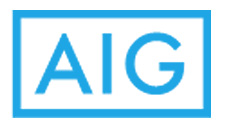It's a collection of legal opinions that describe and delineate the Federal Reserve's ability to fight financial crises, along with a variety of related documents.
And the Fed would really prefer to tell the public nothing more than that.
The Doomsday Book has popped into public view because a group of investors suing the government over the terms of its bailout of the American International Group say some of the memos inside show the Fed broke its own rules.
Last week, in a courtroom overlooking the White House, government lawyers took a break from defending the government against the $40 billion lawsuit, and instead pressed a judge to keep the contents under seal and to limit references to its contents by lawyers and witnesses participating in the weekslong trial.
''Of the tens of thousands of documents that we have produced in this case, the Federal Reserve Bank of New York has sought to retain confidentiality because of the internal sensitivity of only this one,'' a lawyer for the New York Fed, John S. Kiernan of Debevoise & Plimpton, told the United States Court of Federal Claims.
Even the plaintiffs have managed only photocopies of the indexes from the 2006, 2012 and 2014 versions -- each a stack of papers more than an inch high.
Nevertheless, a portrait of the book has emerged from the back-and-forth, as detailed in transcripts of the trial that were first highlighted by The Wall Street Journal.
The Doomsday Book, as it happens, is not a book. It is a collection of documents maintained by the New York Fed's legal department.
The contents include ''an extensive legal history of Federal Reserve lending activities,'' and memos on subjects that deal with the Fed's authority to make loans to municipalities and restructure debts. There is no comparable collection in Washington. The New York Fed is the central bank's firefighting department.
The New York Fed keeps three full sets, plus an electronic version, and it circulates an index. These facts are on the first page of the index, which the lead lawyer for the plaintiffs, David Boies, read aloud in the courtroom last week.
Timothy F. Geithner, who led the New York Fed during the early stages of the financial crisis before becoming Treasury secretary, testified that he kept in his office an abridged version, in a binder about two inches thick, containing the index and a selection of memos. He said he had never seen the full work.
Mr. Geithner in his testimony also played down the importance of the Doomsday Book, saying that he had consulted it infrequently during the crisis because the Fed was quickly forced to take measures beyond anything it had done before.
''We were operating really outside the boundaries of established precedent,'' he said.
At times, the Fed may have even decided to throw out the book. The 2006 version contained ''an informal opinion by the board's general counsel that Federal Reserve Banks do not have the power to make non-recourse loans.'' Such loans do not allow the Fed to recoup losses beyond the value of the collateral.
Mr. Geithner acknowledged in his testimony that during the recent crisis, notwithstanding, the Fed made non-recourse loans.
But Mr. Geithner, in a memoir published this year, wrote that the Doomsday Book did help the New York Fed deal with the collapse of the investment bank Bear Stearns. The Fed kept the company on life support for a few crucial days by lending money to JPMorgan Chase, which in turn lent money to Bear Stearns.
Mr. Geithner wrote that the idea came from ''Tom Baxter, our general counsel, taking a page from the Doomsday Book, the binder full of information about the New York Fed's emergency powers that he had helped write years earlier.''
The lawsuit argues that the Fed ignored the legal opinions in the Doomsday Book again in taking a 79.9 percent equity stake in AIG in the fall of 2008. It argues that the Fed lacked the authority to take an equity stake in the company.
Mr. Geithner and other officials have testified that the bailout was meant to keep the financial crisis from deepening, and they have defended its legality.
The New York Fed has offered a limited explanation of its desire for secrecy.
Mr. Kiernan told the judge at a hearing last week that the collection is ''confidential, proprietary and important.'' The Fed's lawyers also have argued the book deserves privacy because it contains the confidential advice of the Fed's lawyers.
More broadly, the Fed has long regarded secrecy as a strategic advantage. Highlighting the full extent of its power to rescue financial companies might, for example, encourage companies to behave more recklessly. It might reduce the Fed's bargaining power during a crisis. And it might ignite prematurely the kind of political outrage at the measures at the Fed's disposal that frequently attend actual bailouts.
The newest version is particularly sensitive. The 2010 Dodd-Frank Act limited the Fed's ability to make emergency loans to troubled financial companies like AIG. A bipartisan group of senators is pressing the Fed to accept a relatively strict interpretation of those limitations.
The Fed's conclusions will no doubt be reflected in future versions of the Doomsday Book, if they are not already.












 It's called the Doomsday Book -- though by now, officials at the Federal Reserve Bank of New York probably regret they ever came up with that catchy nickname.
It's called the Doomsday Book -- though by now, officials at the Federal Reserve Bank of New York probably regret they ever came up with that catchy nickname.